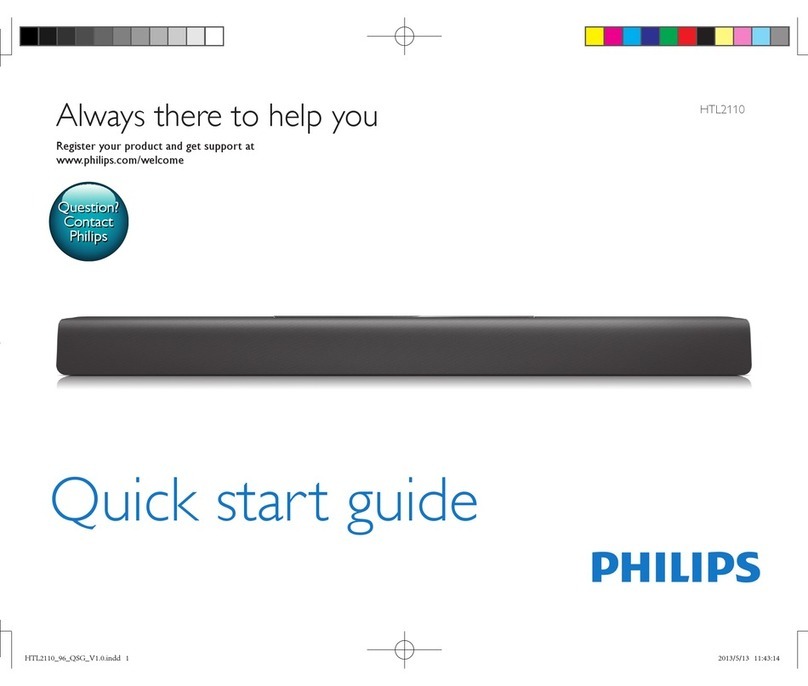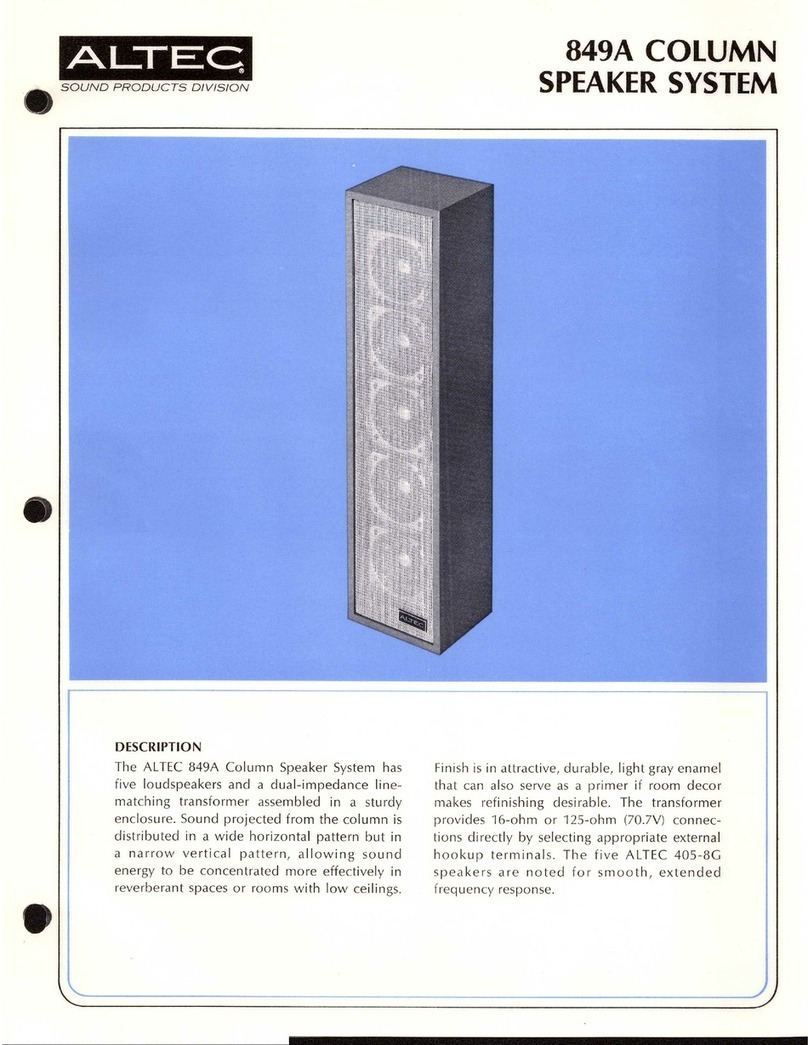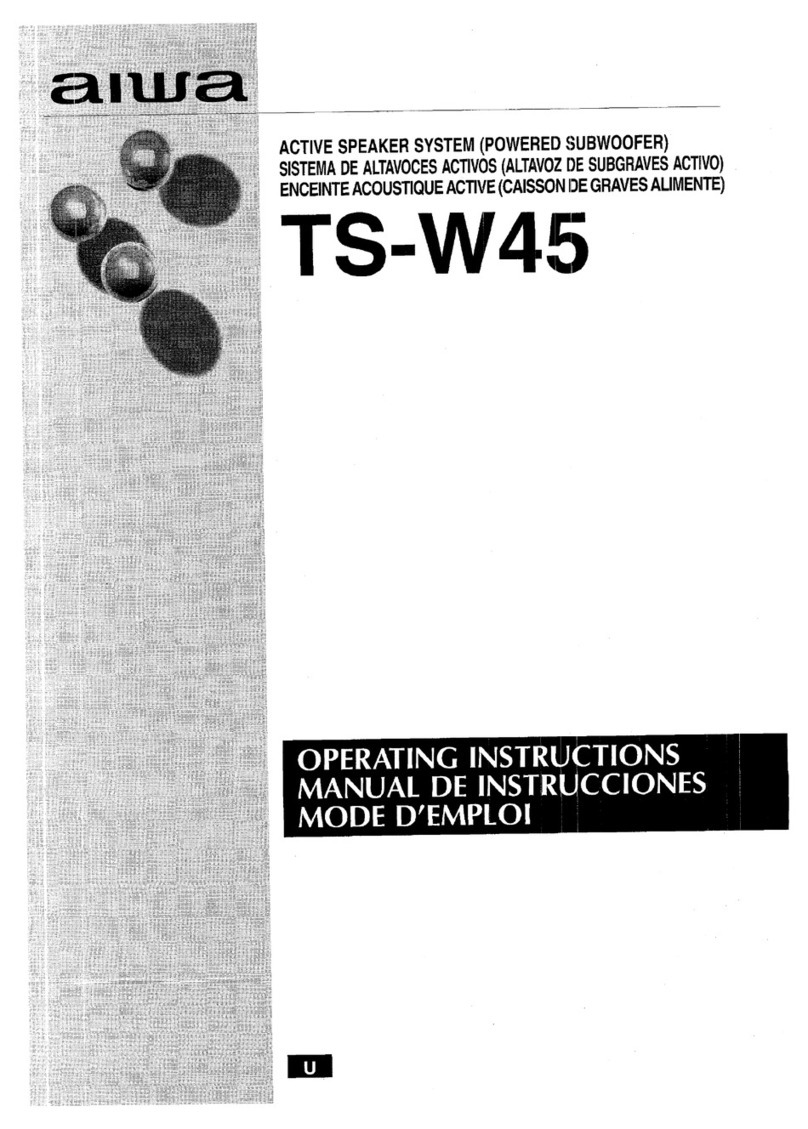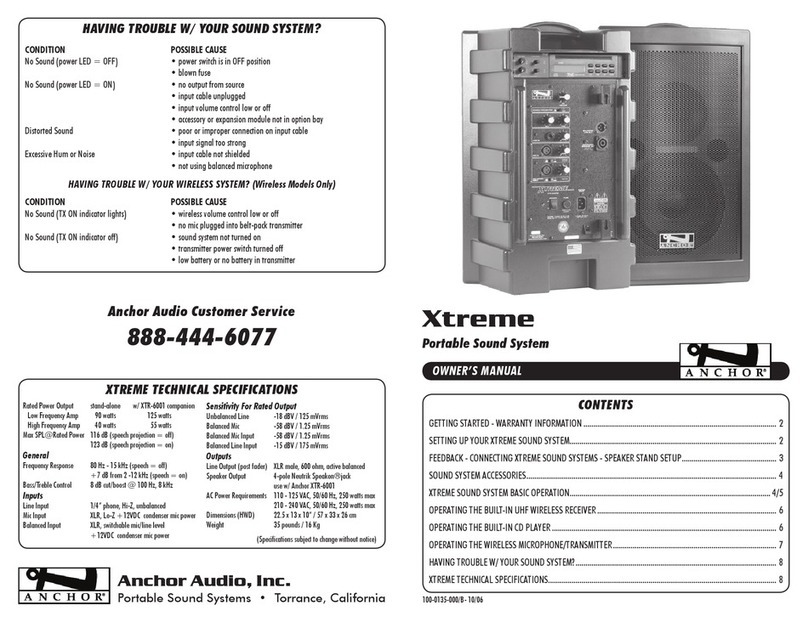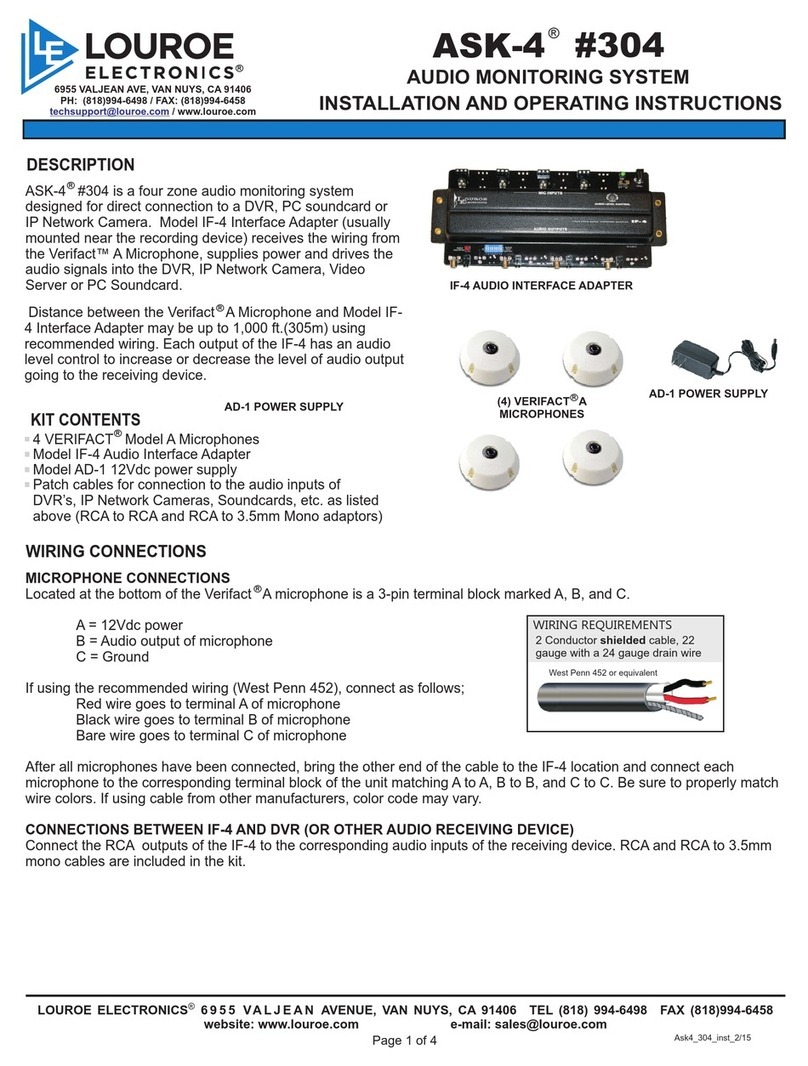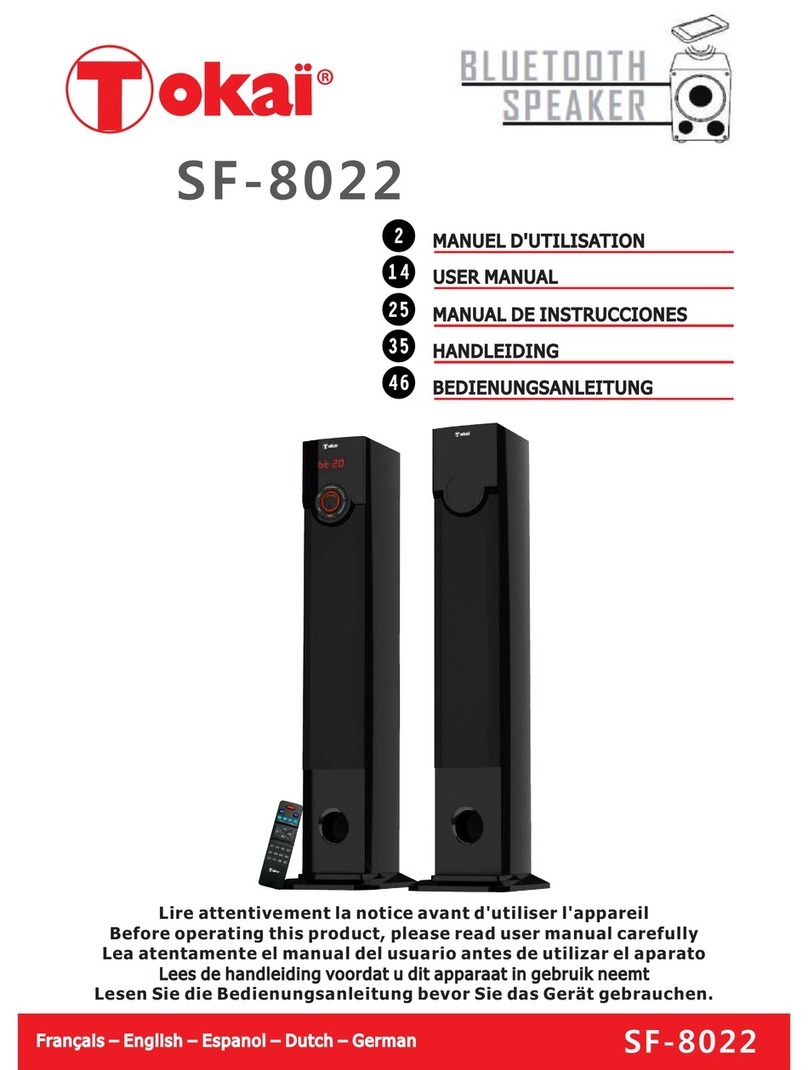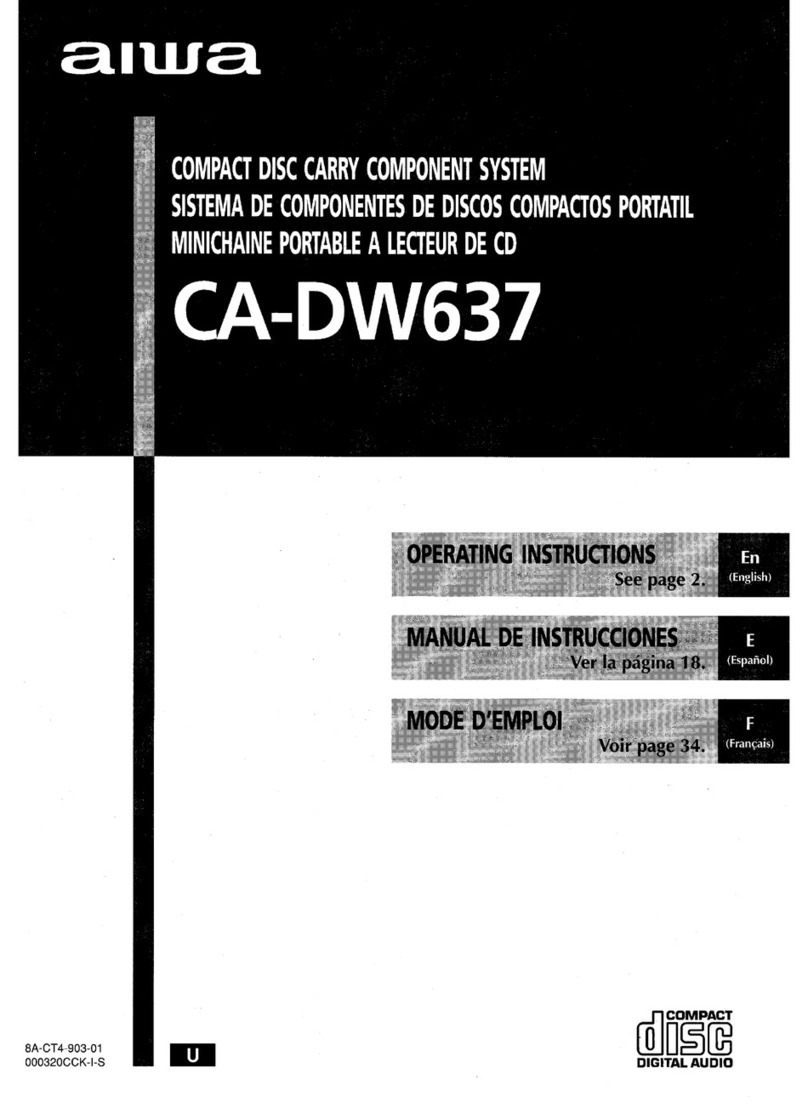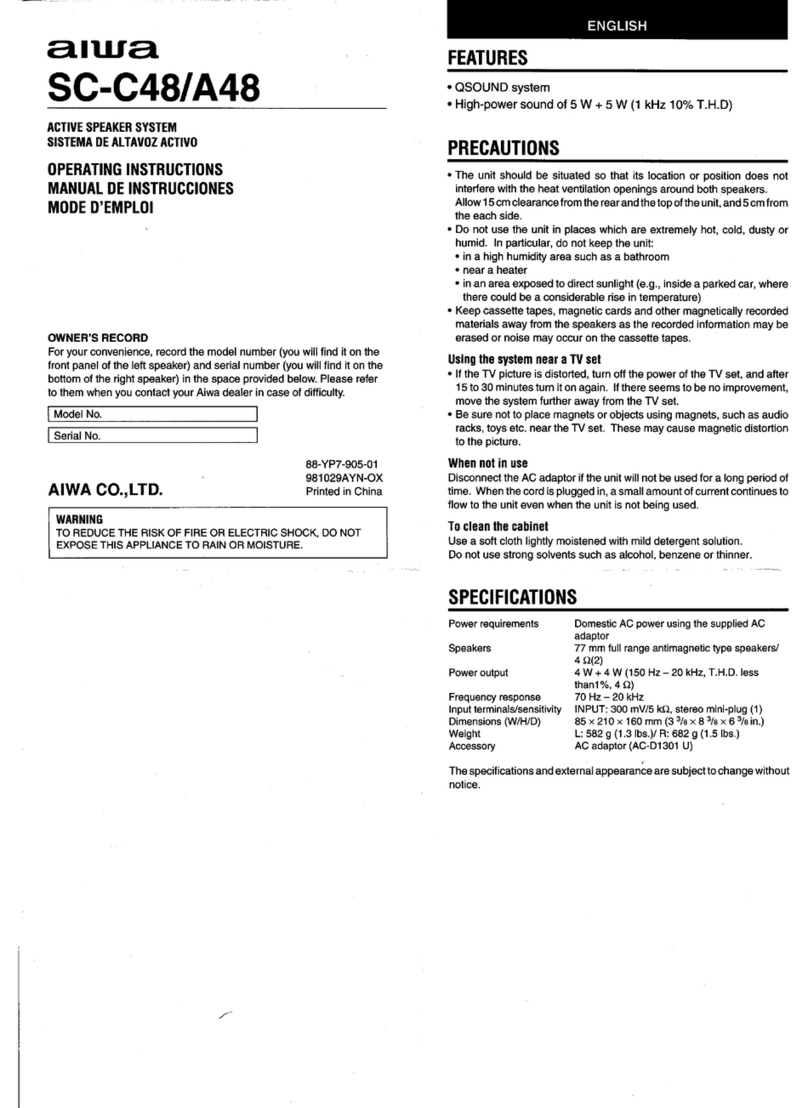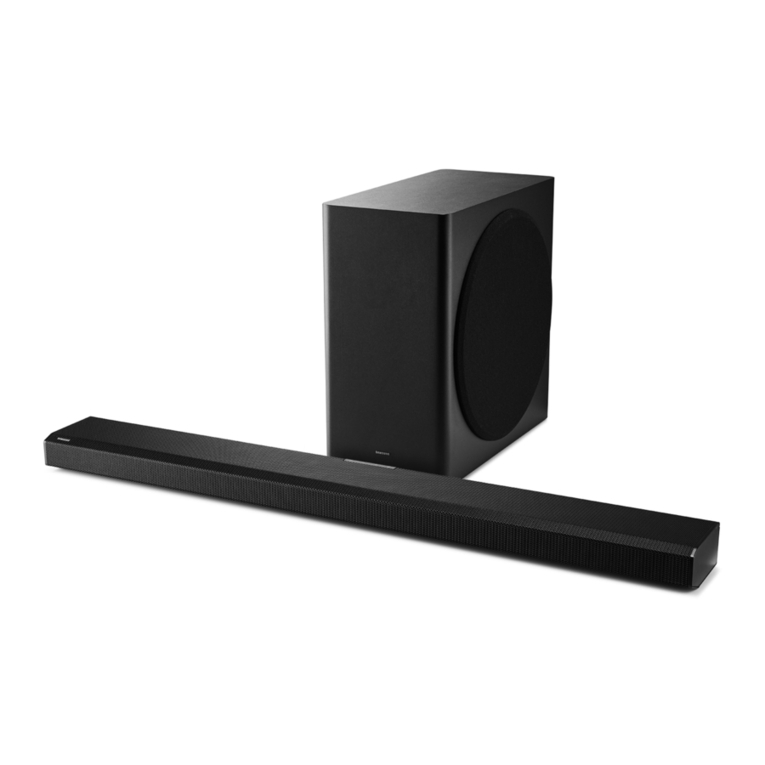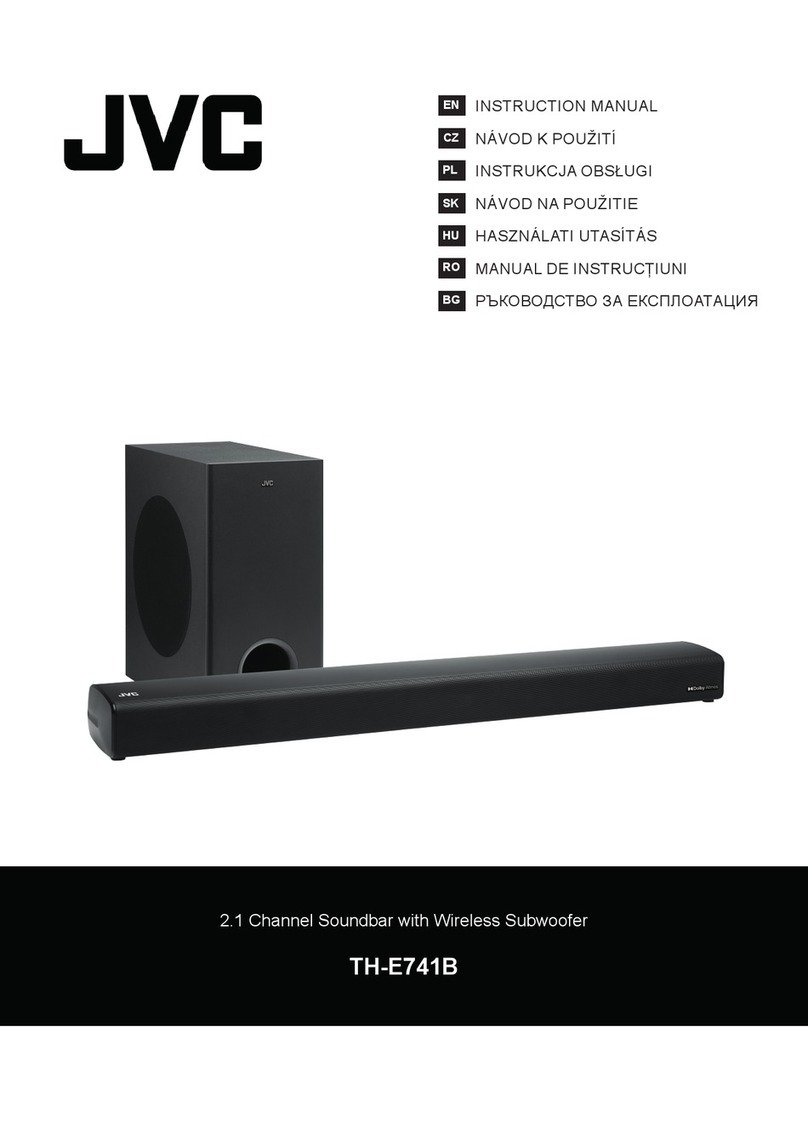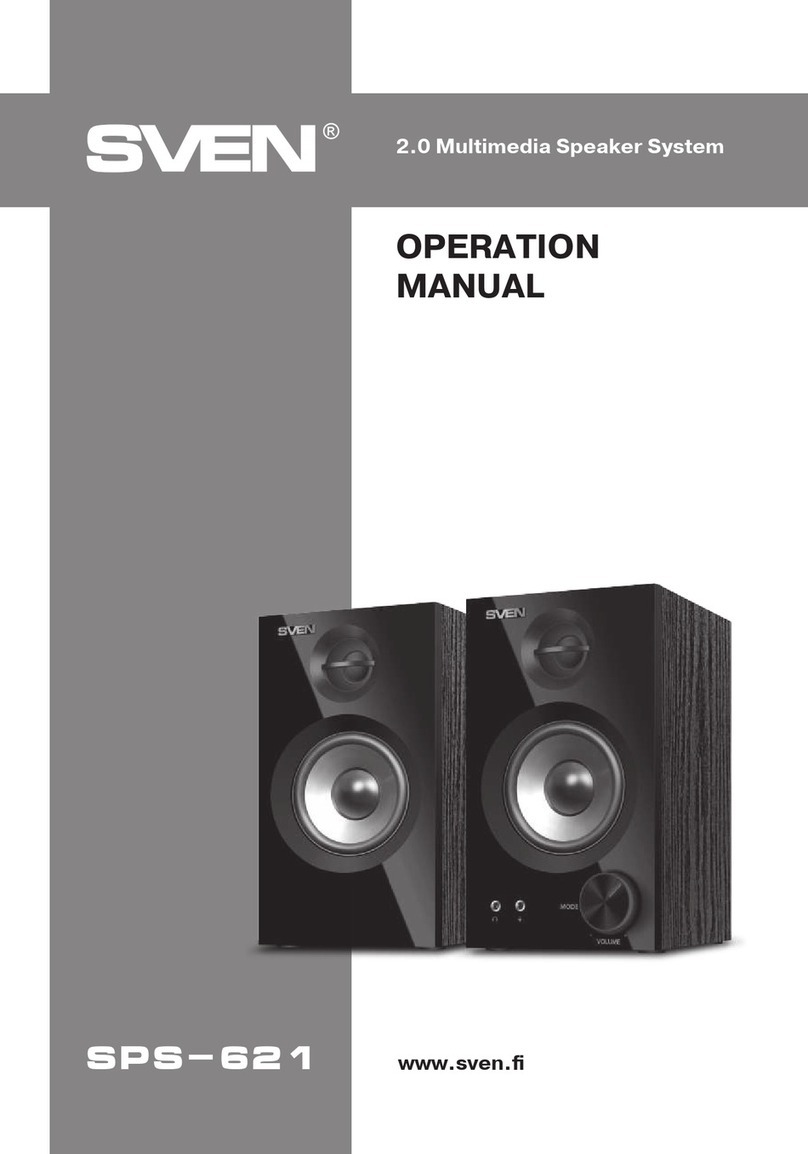Viking 25AE Guide

1
Paging Horns 14
Ceiling Speakers 16
How to Design
a Paging System
Planning--Speaker Placement
Volume Control--Zoning
Product Recommendations
Provided by
VIKING ELECTRONICS
Hudson, WI 54016 • (715) 386-8861
Help@VikingElectronics.com
Visit Our Web Site: www.VikingElectronics.com
Telecom and Security Solutions for the 21st Century

2
Table of Contents
Planning a paging system ...................................................................................................2
Speaker Placement and Number of Speakers.......................................................................3-5
The Importance of Volume Controls....................................................................................6
Feedback Elimination and Zoning .......................................................................................7
Typical Layouts and Materials Lists.....................................................................................8-11
Viking Paging Products.......................................................................................................12
Planning a Paging System–
It’s More Than a Bunch of Speakers
The most common complaint we hear about paging
systems is that employees either can’t hear their
page, or even if they can hear them they simply
can’t understand them. Whether the situation
occurs in an office, manufacturing facility, or retail
environment, the result is almost always the same.
The paging employee has to make a series of repeat
pages, and that person’s frustration becomes more
apparent with each additional page.
Poorly planned paging systems are inefficient, add
unnecessary employee stress, and worst of all,
result in lost sales. After all, whether the customer
is in a store waiting for the paged person, or on the
phone, they’ll walk away or hang up if they don’t
feel they’re being attended to in a prompt fashion.
Planning an efficient paging system is not difficult.
You do not have to be an expert sound engineer
to spot potential trouble spots and come up with
solutions. But you do have to take the time to
analyze the project layout, predicting the most
likely ambient sound levels, and determining the
most likely paging patterns.
Once you have those characteristics in mind, you
can then determine the number and types of
speakers to use. In addition to calculating speaker
counts and placement locations, you should also
determine which areas require adjustable volume
controls, and whether those volume controls are
speaker or wall mounted.
Next, you can calculate amplifier wattage needs.
There is no such thing as a “one-size-fits-all”
paging amplifier. For example, you may choose a
standard 30 watt amplifier to cover the majority of
the facility, but add extra amplifiers for noisy areas
such as factory production areas, warehouses, or
outside lots.
Before you settle on amplifier choices, make sure
you’ve properly considered zoning the system. It’s
true that zoning adds cost to the system, but the
feedback we hear from our customers and installers
is that the cost is well worth it. Zoning minimizes
interruptions to business areas that have no need
to hear all pages. Imagine how distracting it is to
accounting personnel to hear every salesperson’s
page.
Finally, make sure you consider the advantages of
feedback eliminators and page repeaters. Surveys
show that most paged parties miss their first page
simply because they weren’t paying attention
until they heard a portion of their name. By that
time they have most likely missed which line they
are supposed to pick up, or where they are to
report to. With a page repeater in the system, the
paging party makes the page one time. The page
repeater records the page, time shifts it to eliminate
feedback, and then plays the page once or twice,
depending on programming. The result is more
prompt attention to pages.
VIKING

3
Determining the Number and
Placement of Speakers
&OOT#EILING
3PACE3PEAKERS
&EET!PART
&OOT#EILING
3PACE3PEAKERS
&EET!PART
The Rule of Thumb Spacing Model
Sound coverage per speaker is directly related to
ceiling height. The taller the ceiling, the more the
sound spreads. Think of how a flood light mounted
higher up illuminates a larger area. The rule of
thumb model states that you place speakers apart
by twice the height of the ceiling. (See figures to
right)
For example, if you’re working with 8’ ceilings,
place speakers every 16 feet. In this example each
2 speakers cover 256 square feet of ceiling (16 x
16).
Just like lighting, speakers perform best when they
are in the line-of-sight to the listener. Do not mount
speakers next to large beams or partial walls that
would obstruct the sound.
Consider the Reflection Issue
Reflected light is often softer and more pleasing
than light directly from the source. Unless, of
course, the light is being reflected off of glossy
surfaces, in which case it causes glare. The same
is true of sound. If your installation has hard floors
(vinyl, concrete, hardwood, etc.) and other “hard”
features such as metal benches, large industrial
equipment, etc., you have to be especially careful
to avoid “glare” or sound reflection. These surfaces
tend to distort sound, making pages unintelligible.
If the same application has high ceilings, planning
gets a bit more complicated because the listener
also hears reverberation.
The human aural system can easily integrate
sounds heard within 30 milliseconds of each other.
Reverberation causes more than a 30 millisecond
delay and the listener is bombarded with distortion
and “dual messaging.”
In these applications you must modify the rule of
thumb spacing model and consider a minimum or
full overlap spacing pattern. (See next page)
VIKING

4
Ambient Noise Levels
Ambient Noise levels also affect speaker count
and placement. Typical noise levels for different
applications are listed in Figure 1. If you plan to use
background music in your application, plan to boost
volume at least 5 dB above ambient noise levels.
Voice paging demands at least a 10dB volume
increase above ambient to be intelligible. However,
a 15-20 dB increase provides maximum intelligibility
and highest dynamic range.
Noisy applications demand higher speaker counts
and tighter spacing. For voice paging applications
where background music quality is secondary,
select a speaker that has even coverage in the 1 to
6kHz range (the 2kHz region is considered the most
important octave for intelligibility).
Sound Falloff and Dead Zones
All speakers exhibit a fairly predictable pattern of
volume falloff as the listener gets farther from away
from the center axis of the speaker. Figure 2 shows
the difference in volume between the center axis
and 60° off-axis.
An “on-axis” listener seated 3 feet off the floor
(listening height) will experience a normal volume
drop of 6dB. Sound has to travel farther to reach a
listener at the same listening height but 60° off-center
from the speaker axis. That listener will experience
a 15dB volume falloff—a 9 dB difference. Some
speaker manufacturers advertise a 140° coverage
angle. You can see how the wide variation in volume
levels at 120° would be even more unacceptable at
140°.
Edge-to-edge spacing is the least costly way to
design a paging system because it uses the fewest
speakers. If you plan to use an edge-to-edge layout
based on a 120° coverage angle, it’s best to arrange
speakers in the hexagonal pattern shown to the
right. Square patterns result in large “dead” zones
shown by the red diamonds. Hexagonal edge-to-
edge patterns reduce the size of the dead zones, but
cannot eliminate them.
Figure 1 Typical Ambient Noise Levels in dB
30 Quiet library, soft whisper
40 Quiet office, living room
50 Office with office machine noise
60 Conversation
80 Automated factory equipment
70 Restaurant, factory assembly
90 Shop tools, saws, drills
/NAXIS
D"
FALLOFF
OFFAXIS
D"
FALLOFF
Listening height
140° Advertised Coverage Angle
120° Maximum “Real” Coverage Angle
Figure 2 An “on axis” listener seated 3 feet off the floor (listening
height) will experience a normal volume drop of 6dB. Yet sound has
to travel farther to reach a listener at the same listening height but
60° off-center from the speaker axis. That listener will experience a
15dB volume falloff—a 9 dB difference.
The Rule of Thumb
Model results in edge-
to-edge spacing. The
lighter blue outer edges
represent sound falloff.
X#EILING(EIGHT
Regardless of whether you choose a square or hexagonal
pattern, edge-to-edge spacing results in falloff along the edges.
Square patterns also result in the large dead zones shown in
red. Hexagonal patterns reduce, but do not eliminate these
dead zones. VIKING

5
30 Quiet library, soft whisper
40 Quiet office, living room
50 Office with office machine noise
60 Conversation
80 Automated factory equipment
70 Restaurant, factory assembly
90 Shop tools, saws, drills
The minimum overlap pattern eliminates dead zones and
reduces falloff. The full overlap pattern ensures consistent
sound volumes throughout the entire pattern.
-INIMUM/VERLAP
Full Overlap
Overlap Patterns
Overlap patterns offer better sound saturation and
are well suited for noisy applications. They also offer
more uniform coverage when background music or
sound masking (white noise/pink noise) is part of
the system.
Horns and Their Applications
Speaker horns are primarily used in noisy areas.
However, because they can cover enormously large
areas, they are also well suited for use in warehouses,
shipping departments, lots, garages, etc.
Horns perform best and cover the largest areas when
they are mounted 15’ above the floor and set at a
60° angle of projection across the room.
Because horns have such large coverage areas, you
need fewer of them.
Quiet Areas <70 dB
1 horn per 4,000 square feet
Moderate Areas 71-85dB
1 horn per 2,500 square feet
Noisy Areas >85dB
1 horn per 1,200 square feet
60°
15’
above
floor
Up to 60’
For best coverage speaker horns should be mounted 15’ off
the floor and tilted at a 60° angle.
60 Feet
40 Feet
Never point speaker horns at each other. The sounds
cancel each other, cause reverberation, distortion, and
delay. The proper pattern for mounting speaker horns. All horns
point in the same direction with 60’ downrange spacing
and 40’ spacing side-to-side.
VIKING

6
Volume Control
When it comes to setting volume throughout a
paging system, there’s no such thing as “one-size
fits-all.” Different areas within the system need
different volumes based on the ambient noise levels
in those areas and the type of activity being done
there. Setting the volume based on the noisiest
areas usually results in complaints from employees
in quieter areas. Excessively loud paging disrupts
employees and adds to stress levels.
Obviously, the easiest solution to this problem is to
separately zone each area and adjust the volume
accordingly. However, even within a single zone,
there are likely to be areas where a preset volume
may be too loud for certain activities.
For example, a general office area with cubicles
may also contain areas with private offices and
conference rooms. While a louder volume may
work in the open cubicle areas, private office and
conference room occupants generally prefer lower
volumes. That’s where volume controlled speakers
and wall mounted volume controls are indicated.
It’s best to use volume controlled speakers in open
areas where noise levels are relatively constant and
where adjustment is rarely necessary. Wall mounted
volume controls are best suited for private offices
and conference rooms, where the occupants may
choose to hear pages, or turn them off completely.
Setting one volume for all areas, regardless of the ambient
noise level in each area, results in painfully loud pages. This
will generates employee complaints, lower productivity, and
increased stress.
Use wall mounted volume controls in conference rooms and
private offices to allow for individual preferences.
VIKING

7
Feedback Eliminators and Page Repeaters
Real-time paging can always create feedback if the
volume is loud enough and the speaker is located
near the paging telephone. Since feedback is so
predictable, it’s best to eliminate it right from the
start by incorporating a feedback eliminator/page
repeater into your original layout.
A feedback eliminator works by digitally recording
the page and then playing it after the paging
party hangs up. Since the page is already in digital
memory, the page repeater repeats the page at least
one more time. Most listeners do not recognize their
pages on the first call and multiple manual pages
waste employee time.
The Importance of Zoning
Even when the system is properly designed, paging
can be disruptive. It interrupts conversations, and
is distracting. That’s why it’s so important to limit
paging to only those areas of a building where the
paged party is likely to be. The best way to do that
is to add zoning to a paging layout.
The diagram below shows a simple 4-zone layout,
with a separate paging zone for the factory, office
area, conference room, and lunch room.
#AROL+ELLY
CALL
#AROL+ELLY
CALL
Fe e d b a c k
Fe e d b a c k
Fe e d b a c k
#AROL+ELLY
CALL
#AROL+ELLY
CALL
A feedback eliminator/page repeater time shifts the page to
prevent feedback and it automatically repeats the page for
better recognition and response.
PABX
Feedback Eliminator and Page Repeater
4-Zone Paging Layout
Zone 1 Factory
Zone 2 Office
Zone 3 Lunch Room
Zone 4
Conference
Room
VIKING

8
Paging Horns 14
Ceiling Speakers 16
Speaker Layout and Zoning for
Typical Factory/Office Facility
Facility is laid out with 4 zones
Yellow Zone--Office areas
Red Zone--Engineering area
Green Zone--Production areas
White Zone--Warehousing/Shipping
16 Ceiling Speakers used in office/
engineering areas with suspended ceilings.
14 Paging Horns used in all production,
warehousing, and shipping areas.
Wall mounted volume controls used in
conference room and lunch room.
Bill of Materials:
(1) PA-30 Paging
Amplifier
(14) 30AE Ceiling
speakers w/o
volume control
(2) 35AE Ceiling
speakers with
volume contol for
conference rooms.
(14) 25AE Paging
Horns
(2) SV-5W Wall
mount volume
control
(1) ZPI-4 Zone
Controller
VIKING

9
Paging Horns 14
Ceiling Speakers 16

10
Car Dealership Layout
Bill of Materials and Zoning
(2) PA-30 Paging
Amplifiers for
Outdoor Horns and
Service Department
Horns
(14) 30AE Ceiling
speakers w/o volume
control
(15) 25AE Paging
Horns
Application Notes:
A car dealership presents is an example of an installation that requires substantially different paging volumes.
Specifically, the outdoor paging horns and those in the service department must operate at a higher volume to
overcome ambient noise levels. We recommend separate amplifiers for those high volume zones.
Zones:
White Zone--New Car Display Floor and Outdoor Car Lot • Yellow Zone--Executive and Sales Offices
Red Zone--Parts Department • Blue Zone--Service Department
(1) CPA-7B Paging
Amplifier for Sales
Floor Speakers and
Executive Office
Speakers
(1) PA-2A Paging
Amplifier for Parts
Department
(1) ZPI-4 4-Zone
Paging Controller

11
Country Club Layout
Bill of Materials and Zoning
(1) PA-30 Paging
Amplifier for
Outdoor Horns in
Pool and Patio Areas
(19) 30AE Ceiling
speakers w/o volume
control
(10) 25AE Paging
Horns
Application Notes:
A country club is similar to a car dealership in that some zones require louder paging volumes. Specifically, the
outdoor paging horns around the pool, patio, and pro shops and must operate at a higher volume to overcome
ambient noise levels. We recommend separate amplifiers for those high volume zones.
Zones:
Zone 1--Pool and Patio Areas • Zone 2--Locker Rooms and Pro Shop • Zone 3--Restaurants • Zone 4--
Meeting Rooms and Offices
(1) CPA-7B Paging
Amplifier for Locker
Rooms and Pro Shop
(2) PA-2A Paging
Amplifiers for
Restaurants and Offices
(1) ZPI-4 4-Zone
Paging Controller
VIKING

12
We Recommend These VIKING Paging Products
On Your Next Paging Installation
New Paging Amp
30 Watts!
Fax back document No. 489
Model: PA-30
30-Watt Paging Amplifier
Fax back document No. 499
Model: ZPI-4
Multi-zone Paging Interface
Fax back document No. 465
Model: FBI-1A
Anti-feedback Paging Interface
Fax back document No. 455
Model: CPA-7B
Paging/Loud Ringing Amplifier
Paging
Amplifiers
Paging
Accessories
Speakers &
Volume Controls
Fax back document No. 498
Model: 25AE
12-Watt Paging Horn
Fax back document No. 498
Model: 30AE
6-Watt Ceiling Speaker
Fax back document No. 497
Model: 35AE
6-Watt Ceiling Speaker
With Volume Control
Fax back document No. 488
Model: SV-5W
5-Watt Wall Mount
Volume Control
VIKING
Telecom and Security Solutions for the 21st Century
Hudson, WI 54016 • (715) 386-8861
Fax Back: (715) 386-4345
Help@VikingElectronics.com
Visit Our Web Site: www.VikingElectronics.com
© 2005 VIKING Electronics Inc
Other manuals for 25AE
2
This manual suits for next models
5
Table of contents

